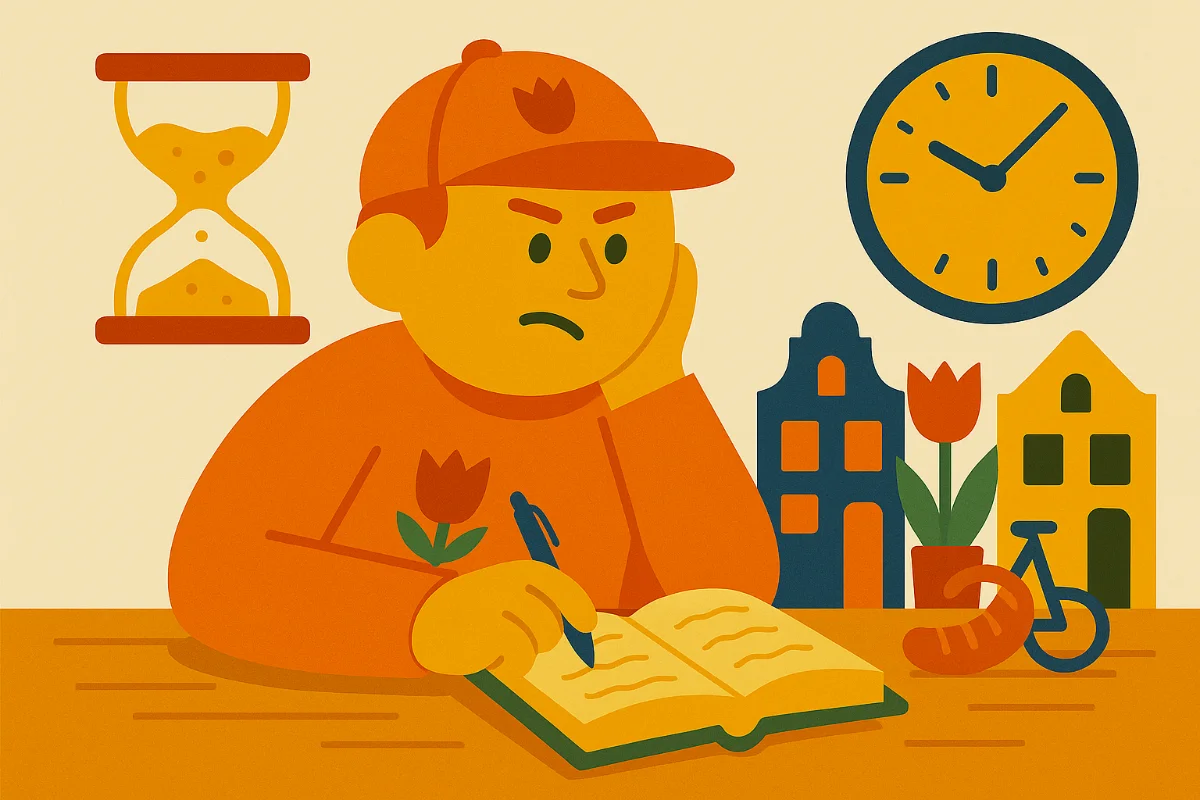According to the US Foreign Language Institute, Dutch takes approximately 24 weeks or 960 hours to learn. Unfortunately many sites quote this wrong. The time is made up from a typical 23 class hours and 17 self study hours per week. The good news is that it is in the easiest category of languages to learn.
When is it Learned?
An important question though is at what point do you consider it learnt? There are those who will tell you you can learn it in 3 months, but it's doubtful that's the level you're thinking about.
If we look at the CEFR scale then we can understand the time to each level more individually:
- A1 proficiency: 60-100 hours
- A2 proficiency: 180-200 hours
- B1 proficiency: 350-400 hours
- B2 proficiency: 500-650 hours
- C1 proficiency: 700-900 hours
- C2 proficiency: 1.000-1.200 hours
These times seem to match up, but a key is that these estimates are on guided learning hours.
Not All Hours Are Equally Effective
This goes to show how important it is to have a good study plan and ensure that your hours learning are spent effectively. Where you want to get to is important here - A2 is generally considered as being able to do the basics like shopping. At B1 you start to get conversationally okay, but really it takes B2 to be more comfortable. C1 takes commit but here you really have a proper grip on the language.
Coming Up With A Final Estimate
Let's assume that not all learning time is 100% efficient, and if you're doing this as a hobby for enjoyment then why does it have to be? Do what's fun! Then let's say it's going to take you around 1000 hours. Divide that by your daily time commitment to get your final answer. For example if you do one hour a day then that's 2.7 years.


